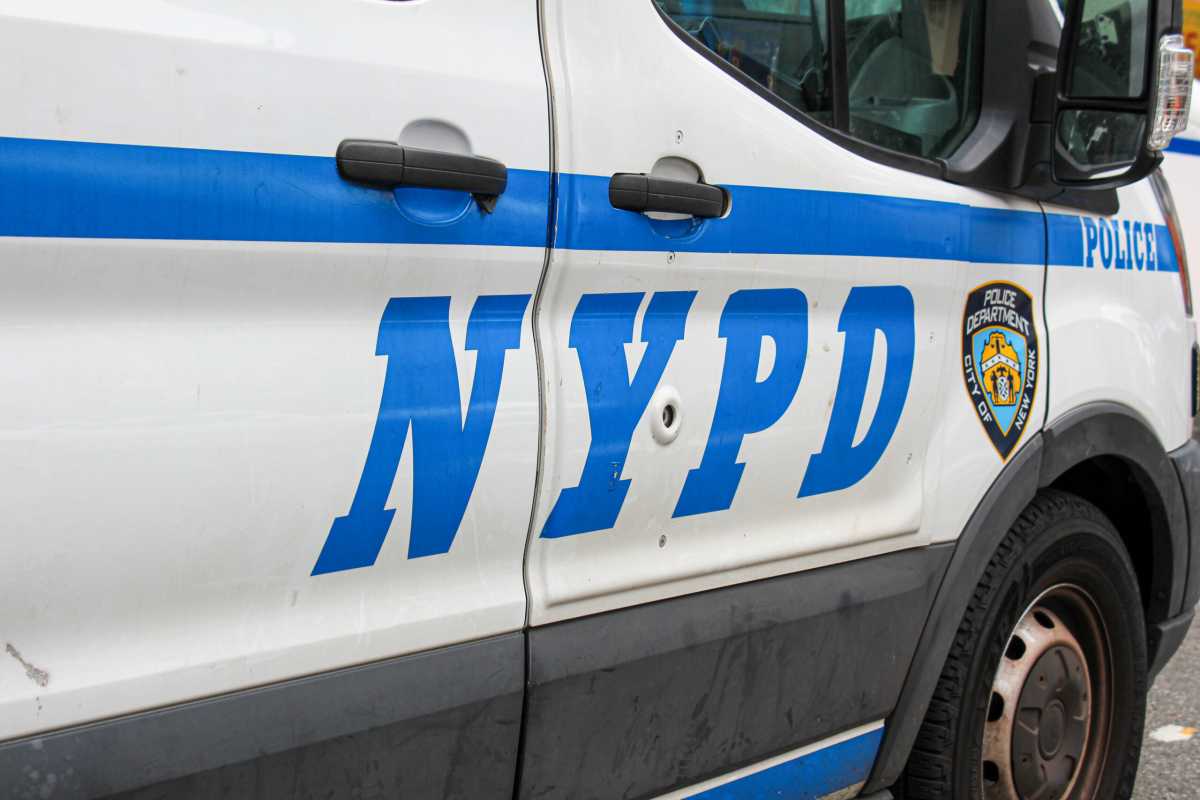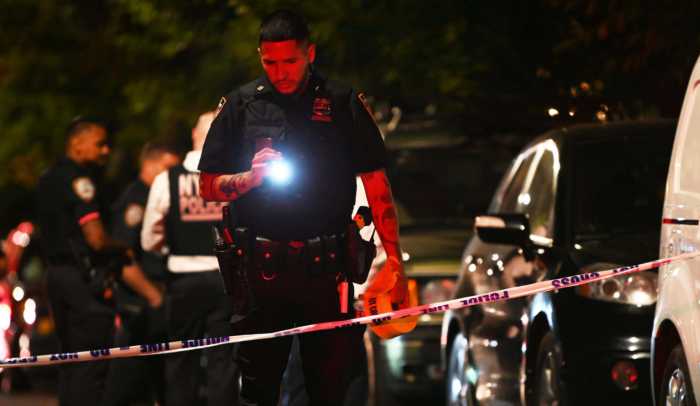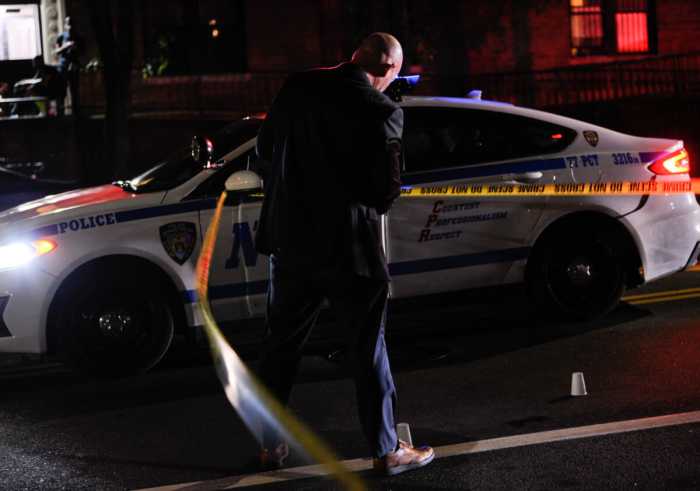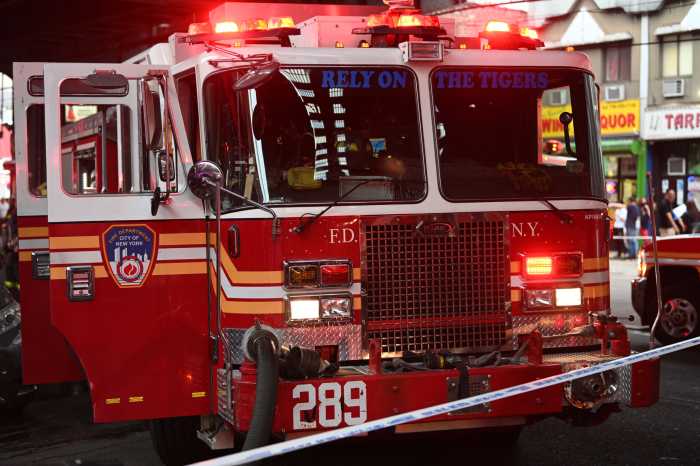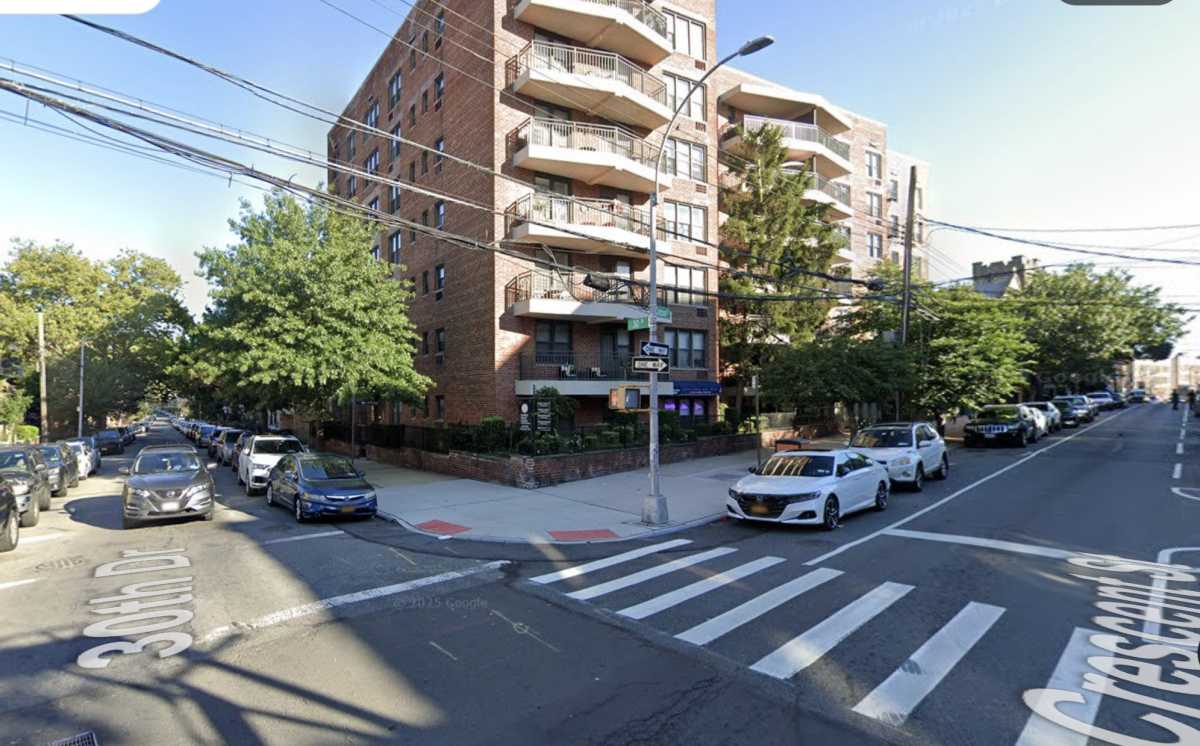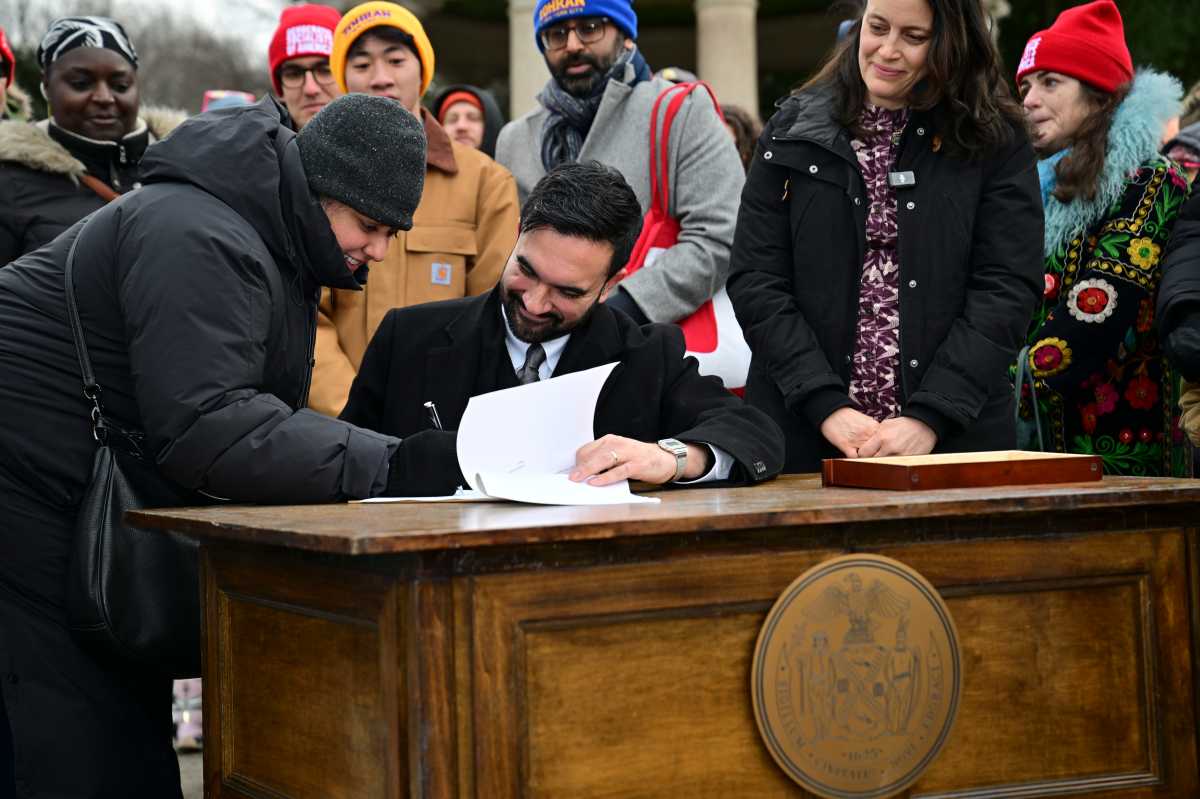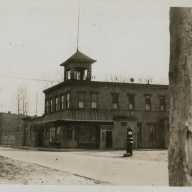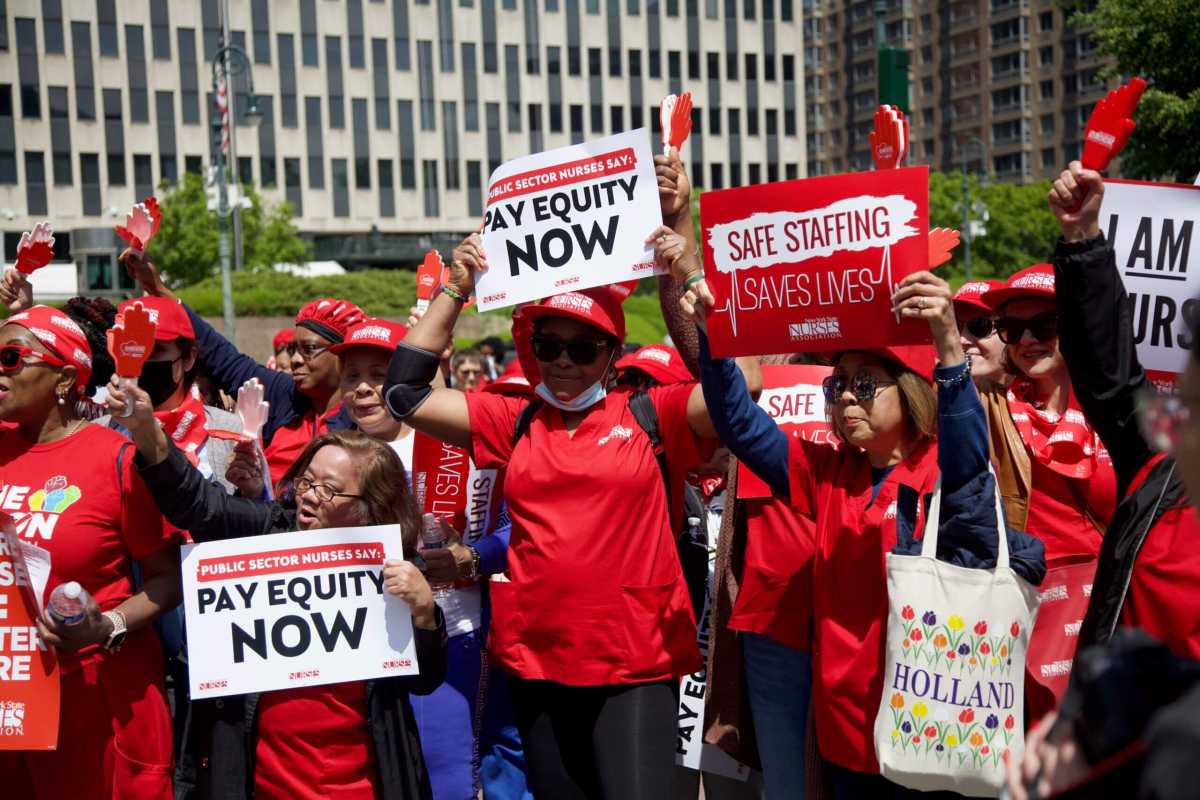The NYPD released the crime stats in northern and southern Queens from Sept. 11-17, comparing the number of cases to the same dates last year. As is often the case, the results vary by crime and precinct.
The northern Queens precincts include the 104th (Ridgewood, Glendale, Middle Village and Maspeth), 108th (Long Island City, Sunnyside and Woodside), 109th (Downtown and East Flushing, Queensboro Hill, College Point, Malba, Whitestone, Beechhurst and Bay Terrace), 110th (Corona and Elmhurst), 111th (Bayside, Douglaston, Little Neck, Auburndale, Hollis Hills and Fresh Meadows), 112th (Forest Hills and Rego Park), 114th (Astoria, Long Island City, Woodside and Jackson Heights) and 115th (Jackson Heights, East Elmhurst, and North Corona).
The southern Queens precincts are the 100th (Arverne, Belle Harbor, Breezy Point, Broad Channel, Neponsit, Rockaway Park, Rockaway Beach and Roxbury), 101st (Far Rockaway and Bayswater), 102nd (Kew Gardens, Richmond Hill East, Richmond Hill, Woodhaven and the northern part of Ozone Park), 103rd (downtown Jamaica Business District, Hollis Park Gardens, Hollis, Lakewood and Jamaica), 105th (Queens Village, Cambria Heights, Laurelton, Rosedale, Springfield Gardens, Bellerose, Glen Oaks, New Hyde Park and Floral Park), 106th (Ozone Park, South Ozone Park, Lindenwood, Howard Beach and Old Howard Beach), 107th (Fresh Meadows, Cunningham Heights and Hilltop Village) and 113th (St. Albans, Hollis, Springfield Gardens, South Ozone Park, South Jamaica, Addisleigh Park and Locust Manor).
One thing that remained largely the same compared to last year was the number of murders. As was the case last year, northern Queens only saw one murder. Southern Queens didn’t have any cases this year after having just one last year.
The stats reflect an increase in rape cases in northern Queens, rising from four to nine. Southern Queens also saw a rise in these cases, from three to five.
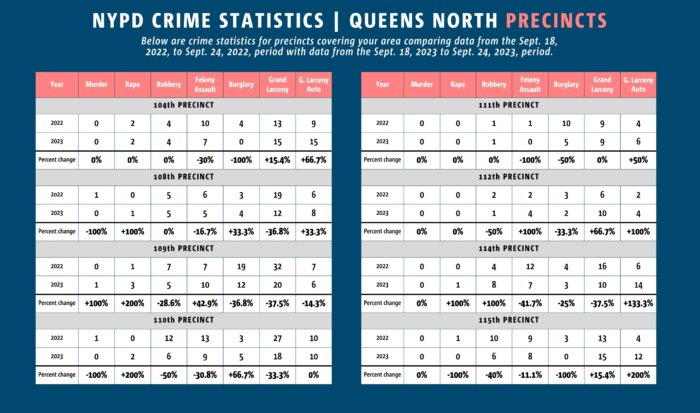
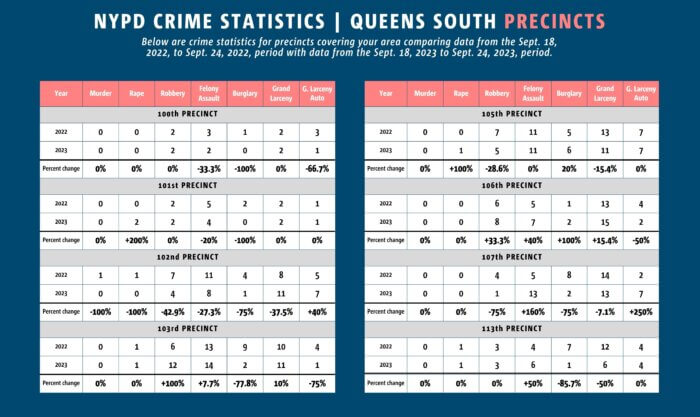
There was a dip in robberies throughout northern Queens, lowering from 45 to 36. Southern Queens, meanwhile, experienced no change, with 37 cases both last year and this year. While three of these precincts experienced no change, cases increased in the 103rd (six to 12) and 106th (six to eight) precincts and decreased in the 102nd (seven to four), 105th (seven to five) and 107th (four to one) precincts.
Felony assaults saw a decrease across northern Queens, from 60 to 50. Only the 109th (seven to 10) and 112th (two to four) precincts experienced an increase in these cases. Unlike northern Queens, the number of felony assault cases in southern Queens rose compared to last year, from 55 to 65. This increase is due in large part to the number of cases within the 107th Precinct soaring from five to 13.
Stats for northern Queens show a sharp decline in the amount of burglary cases, from 49 to 31. There was an even larger drop in southern Queens, from 37 to 14. This continues a downward trend in the amount of burglary cases in both areas, as reflected in the previous crime stats report.
Grand larceny was the most common crime within both northern and southern Queens in the stats for both this year and last year. However, it experienced a large drop in northern Queens, from 135 to 109, while there was only a small decrease in southern Queens, from 74 to 71.
Grand larceny of automobiles present a much different story in northern Queens. The stats for these cases shows an increase from 48 to 75 there. The 109th Precinct was the only one to experience a decline in cases, from seven last year to six this year. The 110th Precinct saw no change, with 10 cases both this year and last year.
In stark contrast to northern Queens, southern Queens experienced no change in the number of these cases, seeing 30 both this year and last year. The 101st, 105th and 113th precincts experienced no change. Increases were seen within the confines of the 102nd (five to seven) and 107th (two to seven) precincts, while the 100th (three to one), 103rd (four to one) and 106th (four to two) precincts each experienced declines.

